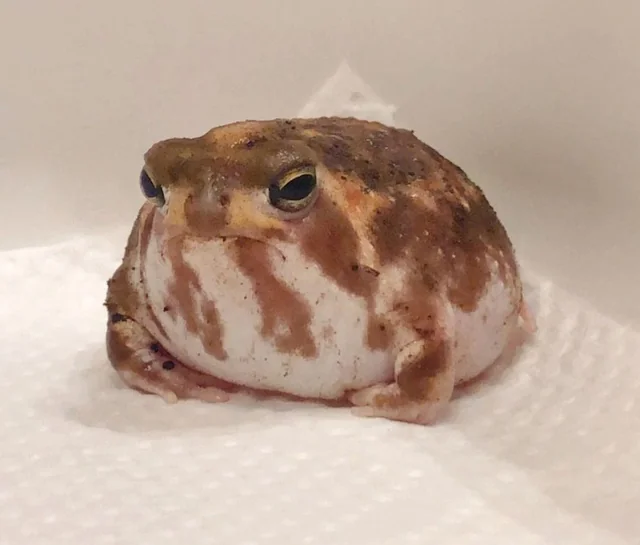If you're curious about the common rain frog and wondering if it's toxic, you're not alone! This adorable, small frog species is known for its unique appearance and interesting behaviors. But just like with any animal, it's important to know what you're dealing with. In this article, we'll dive into the world of common rain frogs, discuss whether they're toxic, and give you tips on how to safely interact with them.
The common rain frog (scientifically known as Eleutherodactylus johnstonei),Breviceps adspersus, also known as common rain frog, bushveld rain frog, is a small, terrestrial frog found primarily in the Caribbean. It has a distinctive look with a smooth, often moist skin that helps it adapt to both wet and dry environments. Despite its name, the common rain frog is quite adaptable and can be found in various habitats, not just rainy areas.

While the common rain frog might look like something out of a children’s storybook, it's important to know a few key facts about it before interacting with this species. Understanding its biology, behavior, and environment is essential to avoiding potential risks when handling or observing one.
One of the most common questions people ask about the common rain frog is whether it's toxic. The short answer is: no, the common rain frog is not considered toxic to humans. Unlike some other frog species that use toxins for self-defense, the common rain frog lacks any significant poisonous secretion. Its skin may be a bit slimy, but that’s simply to help it retain moisture in its habitat.
However, that doesn't mean it's completely harmless. While it's not toxic, it’s always a good idea to avoid handling wild frogs unnecessarily, as they can carry diseases or parasites that could be harmful to humans. If you do need to handle one, make sure to wash your hands thoroughly afterward.
Despite not being toxic, the common rain frog plays an essential role in its ecosystem. It helps control insect populations by feeding on small bugs, and it is also an important part of the food chain for many predators, such as birds and larger amphibians.
Moreover, the common rain frog can be found in a variety of habitats, from tropical rainforests to drier areas, making it an adaptable species. Its presence can indicate the overall health of its environment, as frogs are considered bioindicators due to their sensitivity to environmental changes.
If you're planning to interact with a common rain frog, it’s essential to do so responsibly. Frogs, in general, can be quite delicate, and handling them improperly may cause stress or injury. Here's how to interact safely with a common rain frog:
Avoid Handling Unless Necessary: While the common rain frog isn't toxic, it’s still best to observe it from a distance. If you must handle it, make sure your hands are clean and moist to prevent damaging its delicate skin.
Wear Gloves: If you do decide to touch the common rain frog, it's a good idea to wear gloves to protect both you and the frog. Frogs’ skin can absorb chemicals from our hands, and those chemicals might harm them.
Create a Safe Environment: If you plan to keep a common rain frog as a pet, it’s important to provide an environment similar to its natural habitat. Ensure it has enough humidity and moisture, as this species requires a slightly damp environment to thrive.
Although the common rain frog is not aggressive and does not bite humans, it’s still possible to get a nibble by accident, especially if you’re trying to pick it up. If this happens, don’t panic. Simply wash the area with soap and water, and make sure there’s no open wound or injury.
If you experience any unusual symptoms like redness, swelling, or irritation from handling a common rain frog, you should clean the area and monitor the reaction. If any symptoms persist or worsen, it’s best to consult a healthcare professional, though this is a rare scenario.
The common rain frog is often found in moist, humid environments such as tropical rainforests, but it can also adapt to drier regions. Its habitat typically includes areas with plenty of vegetation, which helps it stay hydrated. The common rain frog is an amphibian, so it requires both land and water to thrive.
If you're looking to spot a common rain frog in the wild, early morning or evening is usually the best time, as they tend to be more active during these times when the air is cooler and more humid.
To sum up, the common rain frog is not toxic and poses little risk to humans in terms of physical harm. It’s a fascinating creature that plays a key role in its ecosystem, and understanding how to interact with it properly is important for both your safety and the frog’s well-being.
Next time you're out exploring the wild or considering keeping a common rain frog as a pet, remember to respect its natural habitat and handle it with care. With a bit of knowledge and respect, you can enjoy the beauty and uniqueness of this remarkable amphibian without any worries.
animal tags: Brevicipitidae
We created this article in conjunction with AI technology, then made sure it was fact-checked and edited by a Animals Top editor.